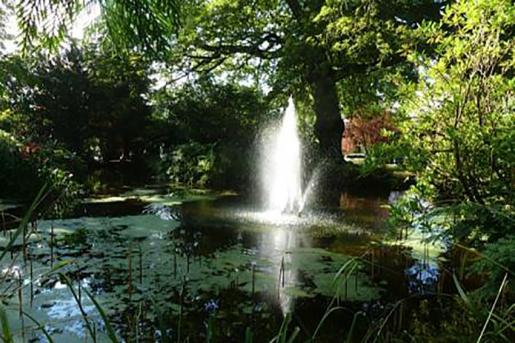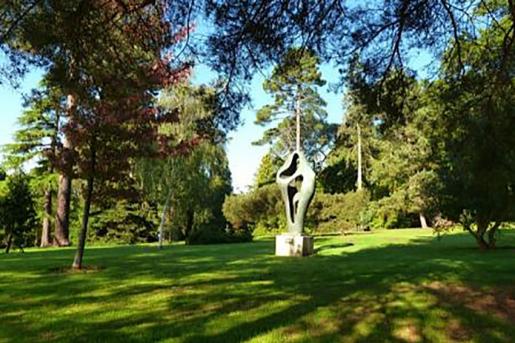- Gardens
The 400 acre grounds of the University of Exeter are probably the most attractive of all the UK universities. The main campus is a registered botanic garden. The Streatham estate, acquired in 1922, is the nucleus of the University’s spectacular site. The lodge on the corner of New North Road marks the entrance to the Streatham Estate, laid out in the 1860’s by Richard Thornton West, an East India merchant who, it is believed, spent £80,000 on Streatham Hall (now Reed Hall) and £70,000 on laying out and improving the estate. The landscaping and tree planting was carried out by Robert Veitch, whose plant collectors (including Wilson and the Lobb brothers) went to many parts of the world. At the time of planting on the estate many of the trees must have been unique in Europe. The Victorian planting has been admirably preserved, and, as the University expanded, a wide range of rare, interesting and beautiful plants have been used throughout the estate exploiting the micro-climates created by the buildings and the natural features of the site. The grounds are further enhanced by modern sculpture. The 1931 master plan by Vincent Harris proposed a formal axis running up the slope to Reed Hall (see separate description) with the main buildings fanning out from it to take advantage of the views of the city. The Harris plan was abandoned as it was unsuitable for the hilly terrain. Sir William Holford (later Lord Holford) was appointed as planning consultant in 1953. He devised an informal layout of winding roads. in the 1950’s and 1960’s when the University expanded rapidly, after being granted a charter as an independent university in 1955. The campus has a varied collection of architect designed buildings: the Grade II listed Chapel and the Italianate Reed Hall; the C17- Cotswold-Lutyens style buildings of Vincent Harris grouped along Prince of Wales Road, Holford’s modern self-contained groups of buildings along The Queen’s Drive; the Physics building, designed by Sir Basil Spence in 1963-67, the tower of which is prominent in the rolling Devon landscape. Viewed from afar, this tower competes with the Cathedral. The University continued to expand in the later part of the C20 and the early C21 as part of a billion pound expansion plan to increase the student population to 20,000. The road system and car parks have been reorganised recently in order to create a pedestrian piazza on the heart of the campus which has considerably improved the University environment. The new buildings continue the tradition of individual architect-designed modern buildings, and demonstrate that the high quality landscape structure established by Robert Veitch in the 1860’s and copied throughout the expansion of the University can absorb new development without compromising its integrity.
The designed landscape of the Streatham Estate survives essentially intact and is a good representative example of a landscape laid out by a designer of national repute in association with an architects of national repute. It is therefore advised that the historic designed landscape is of significance in the national context, and it is therefore recommended for inclusion on the Register of Parks and Gardens of Special Historic Interest at Grade II.
Chapel, Reed Hall and the series of steps with handrail supported on balusters listed Grade II.
Cherry & Pevsner: The Buildings of England – Devon, 1989: 403-7 S Pugsley: Devon Gardens – An Historical Survey, 1994: 15-16, 177 T Gray: The Garden History of Devon, 1995: 189-91,190. Country Life v.125,1959: 1002-03; v.158, 1975: 1748-49; v.159, 1976: 1045 Gardeners’ Chronicle v.160 no.9, 1966: 14-15 Grounds and Gardens of the University of Exeter, 1969 International Dendrology Society Year Book, 1971: 8-13; 1972: 13-17; 1973: 52-56


